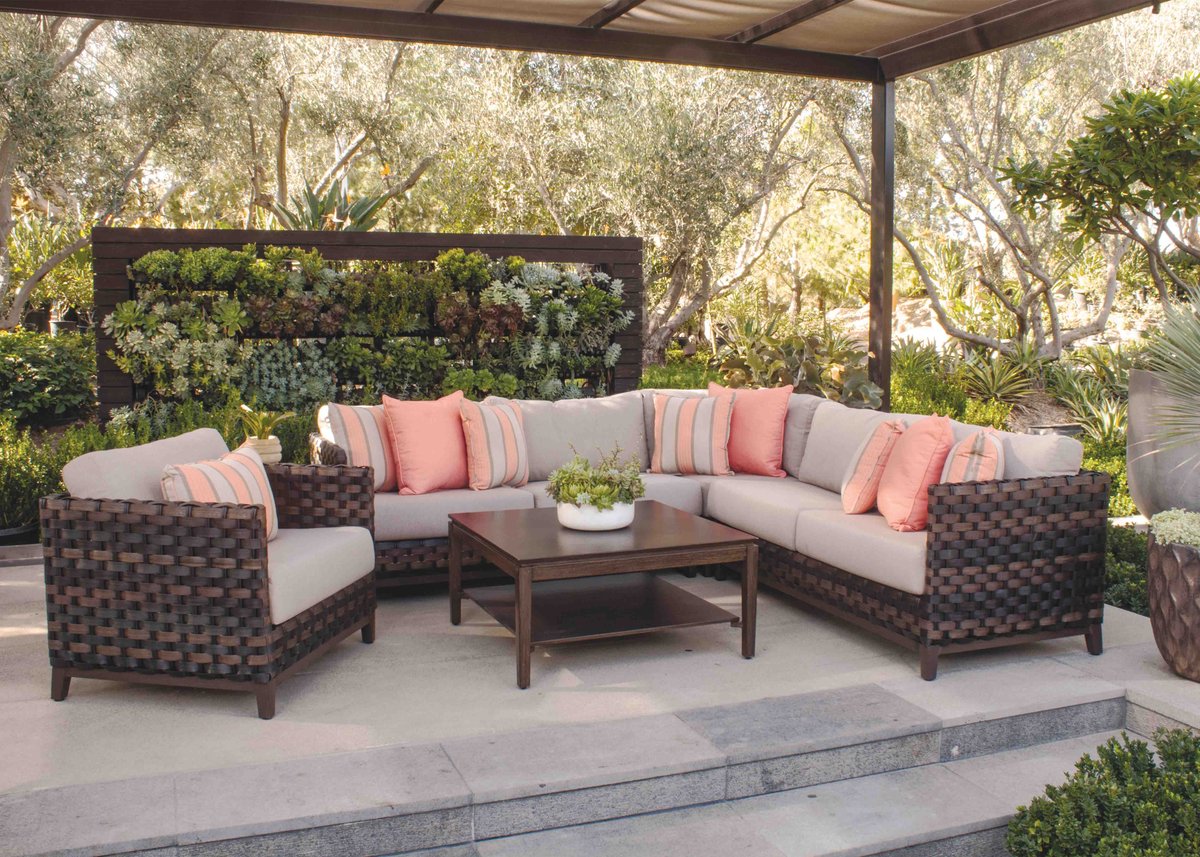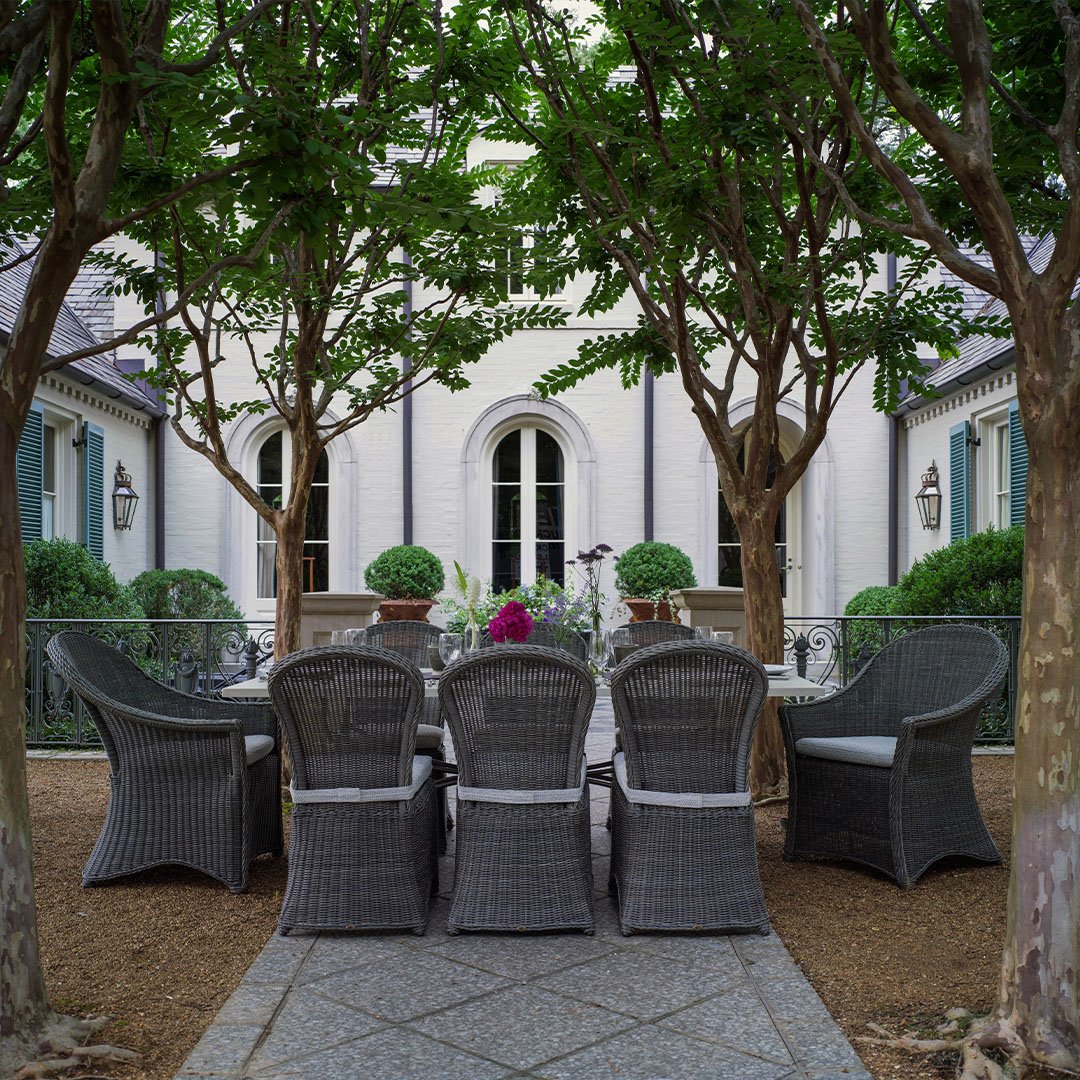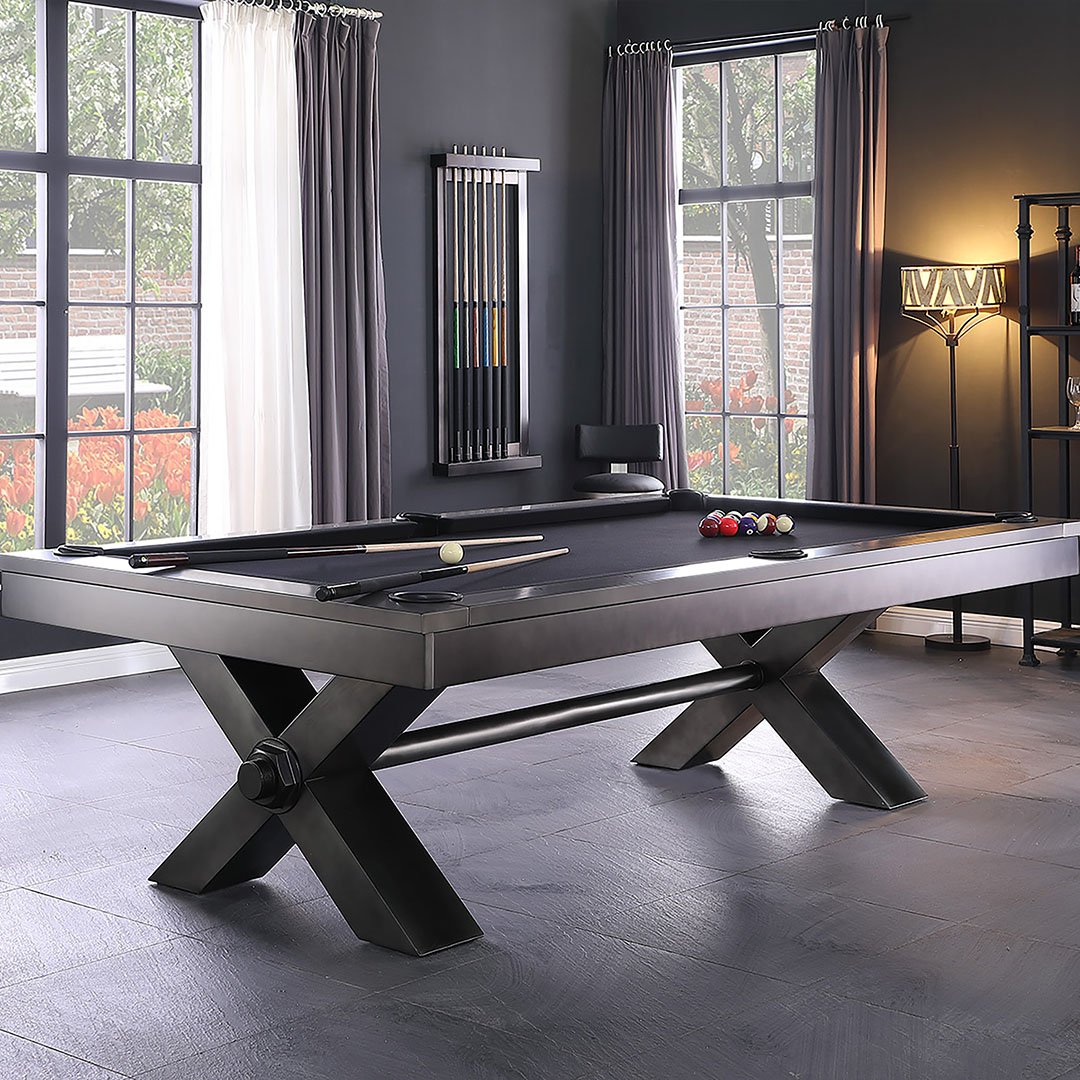Patio Furniture Materials: Comparing Natural vs Synthetic
When it comes to choosing the perfect patio furniture, one of the key decisions you'll encounter is selecting the right material. In this guide, we'll explore the differences between natural and synthetic outdoor furniture materials, including durability, comfort, style, and maintenance requirements. By the end, you'll be equipped with the knowledge to make an informed choice, ensuring your outdoor space is both stylish and comfortable, regardless of what the weather throws your way. So, let's dive into the world of patio furniture materials and discover the unique qualities that natural and synthetic rattan bring to your home decor.
Overview of Patio Furniture Materials
The look and feel of your patio can be significantly enhanced by quality outdoor furniture. The choice of material plays a huge role in this. From wood and metal to resin wicker and synthetic resin wicker, the options are plentiful. Keep reading to learn about patio furniture materials or check out our comprehensive outdoor furniture guide for more information.
Defining Natural Patio Furniture Materials
Natural materials, as the name suggests, are derived from nature without any major alteration. Wood, rattan wicker, and metal are examples of natural materials typically used in patio furniture productions. Wood, such as teak or cedar, is highly favored for its classic natural look.
Rattan wicker is another common natural material used in patio furniture. Rattan furniture is made from the sturdy vines of the rattan palm, woven to create comfortable and durable outdoor furniture.
Understanding Synthetic Patio Furniture Materials
Synthetic materials, on the other hand, are manmade. Manufacturers design these materials to mimic the appearance and texture of natural ones. Resin wicker and HDPE wicker are popular examples of synthetic wicker. Synthetic wicker furniture, including resin wicker furniture, is known for its longevity and lack of maintenance compared to natural wicker.
Comparing Natural Materials for Patio Furniture
If you are wondering what material would be best for your patio furniture, it's important to compare natural and synthetic materials. The most commonly used natural materials for patio furniture include wood, wicker, and metal. Let's take a detailed look at each of these.
Wood Material
Wood patio furniture brings a rich warmth and timeless style to outdoor settings. Natural wood, like teak, is incredibly strong, making it a popular choice for many homeowners. However, it does require regular maintenance to keep it looking its best. Mistakes to avoid include placing natural wood furniture without a protective finish in direct sunlight, as this may cause it to warp or crack.
Wicker Material
Natural wicker furniture, such as rattan furniture, is known for its beauty, comfort, and durability. When well cared for, it can hold up well in many outdoor circumstances. Unfortunately, natural wicker can be susceptible to the elements, leading to rotting and deterioration of the material in extreme cases.
Metal Material
Metal, being naturally sturdy and robust, works perfectly for patio furniture. It can be surprisingly lightweight and can resist most weather conditions. However, it can get hot under the sun and may not be as comfortable to sit on as opposed to wood and wicker material. If you go with metal, outdoor cushions are a good way to increase comfort.
Comparing Synthetic Materials for Patio Furniture
The most commonly used synthetic materials for patio furniture include plastic, resin, and polymer. Let's take a detailed look at each of these.
Plastic Material
One of the most affordable options, plastic furniture carries the advantage of being lightweight and easy to maintain. It's also recyclable, making it a considerably eco-friendly choice. However, it might not possess the same aesthetic appeal as, say, natural wicker or rattan furniture. And generally speaking, most plastic furniture is not as durable as outdoor furniture made from natural materials.
Resin Material
Resin wicker furniture convincingly imitates the look and feel of natural wicker, while outperforming it in terms of durability and maintenance. Resin wicker, especially HDPE wicker, stands up to outdoor conditions pretty well and requires minimal maintenance.
Polymers Material
Another favorite in synthetic wicker furniture is polymers. These are mainly used in high-end outdoor furniture thanks to their incredible strength, durability, and potential for a variety of designs. However, they can be a bit pricey.
Pros and Cons of Natural vs Synthetic Materials
While the charm of natural materials like rattan and natural wicker can't be ignored, synthetic materials have their own host of benefits. Let's take a look at some factors to consider when comparing these patio furniture materials.
Durability of Natural vs Synthetic Materials
When it comes to durability, synthetic resin wicker furniture takes the win. Natural materials tend to deteriorate with weather changes, while synthetic wicker can better resist fading, chipping, and UV damage. However, synthetic materials might not offer the same 'warm' and natural feel that materials like rattan or natural wicker provide. See also our weather resistance of natural vs synthetic materials guide.
Aesthetic Value
Synthetic wicker furniture has evolved greatly over time, and today, it's great at mimicking the natural aesthetics quite impressively. However, the unique characteristics of natural materials like bamboo, teak, rattan, and wicker, are still ways ahead if you are seeking a truly natural and rustic look for your patio.
Cost Analysis
Typically, synthetic outdoor furniture tends to be more cost-effective in the long run. It's durable, low-maintenance, and requires less frequent replacement. Conversely, while natural materials might have a lower upfront cost, they can incur higher maintenance and replacement costs over time.
Environmental Impact
The tussle between natural and synthetic materials also extends to their environmental impact. Natural materials are eco-friendly and biodegradable, whereas synthetic materials, although recyclable, are derived from fossil fuels. The manufacturing process of synthetic materials can also emit harmful byproducts. However, there are sustainable synthetic alternatives available these days that minimize this impact, making the choice a bit easier.
Tips for Choosing Between Natural and Synthetic Outdoor Furniture
Consider your budget when choosing between natural and synthetic wicker. Typically, synthetic wicker furniture like resin wicker or HDPE wicker runs more expensive than natural wicker furniture. It's a trade-off between the charming authenticity of natural materials and the longevity of synthetics.
Think about the weather in your area. If you live in a region with harsh weather conditions, synthetic resin wicker furniture would be a better choice. On the other hand, if you live in a relatively mild climate and plan to store your furniture indoors during off-seasons, natural wicker would serve you well.
See our latest outdoor furniture design
If you’re interested in finding new outdoor furniture, Watson’s has everything you need.
When you shop with us, you’ll find an amazing selection and personalized service, along with the guaranteed lowest prices in the USA. We have a wide selection of outdoor furniture from the leading brands along with tons of accessories to make your spa stand out. Shop online or stop by your nearest Watson’s location today.
FAQs
What is the best material for outdoor furniture in the sun?
The best material for outdoor furniture that is exposed to the sun is typically Teak wood. Teak is highly durable and naturally resistant to weathering, making it perfect for withstanding the harsh conditions of direct sunlight. It has a high oil content that helps protect it from damage caused by UV rays, preventing fading and cracking. Additionally, Teak wood has a beautiful, natural appearance that adds an elegant touch to any outdoor space. Other materials like aluminum and wrought iron may also be suitable options, as they are generally resistant to sun damage and are lightweight, making them easy to move around.
Which material do you think is better to use to make outdoor furniture?
When it comes to making outdoor furniture, there are a few materials that are commonly used. One popular option is teak wood, which is known for its durability and resistance to weathering. Teak furniture is highly sought after for outdoor settings due to its natural oils that help protect it from moisture and pests. Another material often used for outdoor furniture is aluminum. Aluminum furniture is lightweight, rust-resistant, and easy to maintain. It's a good choice for those seeking a modern and sleek design. Additionally, resin wicker is another popular material for outdoor furniture. It's weather-resistant, durable, and available in a variety of colors and styles.
What is the difference between natural rattan and synthetic rattan furniture?
The main difference between natural rattan and synthetic rattan furniture lies in the material they are made from. Natural rattan furniture is crafted from the stalks of a climbing palm plant called rattan. It boasts a unique and organic appearance, with a beautiful woven texture. On the other hand, synthetic rattan furniture is made from materials like polyethylene or polypropylene, designed to imitate the look and feel of natural rattan. While synthetic rattan lacks the natural charm of its counterpart, it offers durability, and weather resistance, and requires less maintenance. Additionally, synthetic rattan furniture is often more affordable compared to natural rattan.














